Crochet as Wound: Ophelia Arc’s Flesh-Toned Obsessions
The first impression of Ophelia Arc’s work is not visual but visceral: flesh-toned yarn bulging into forms that look as though they once belonged inside the body.
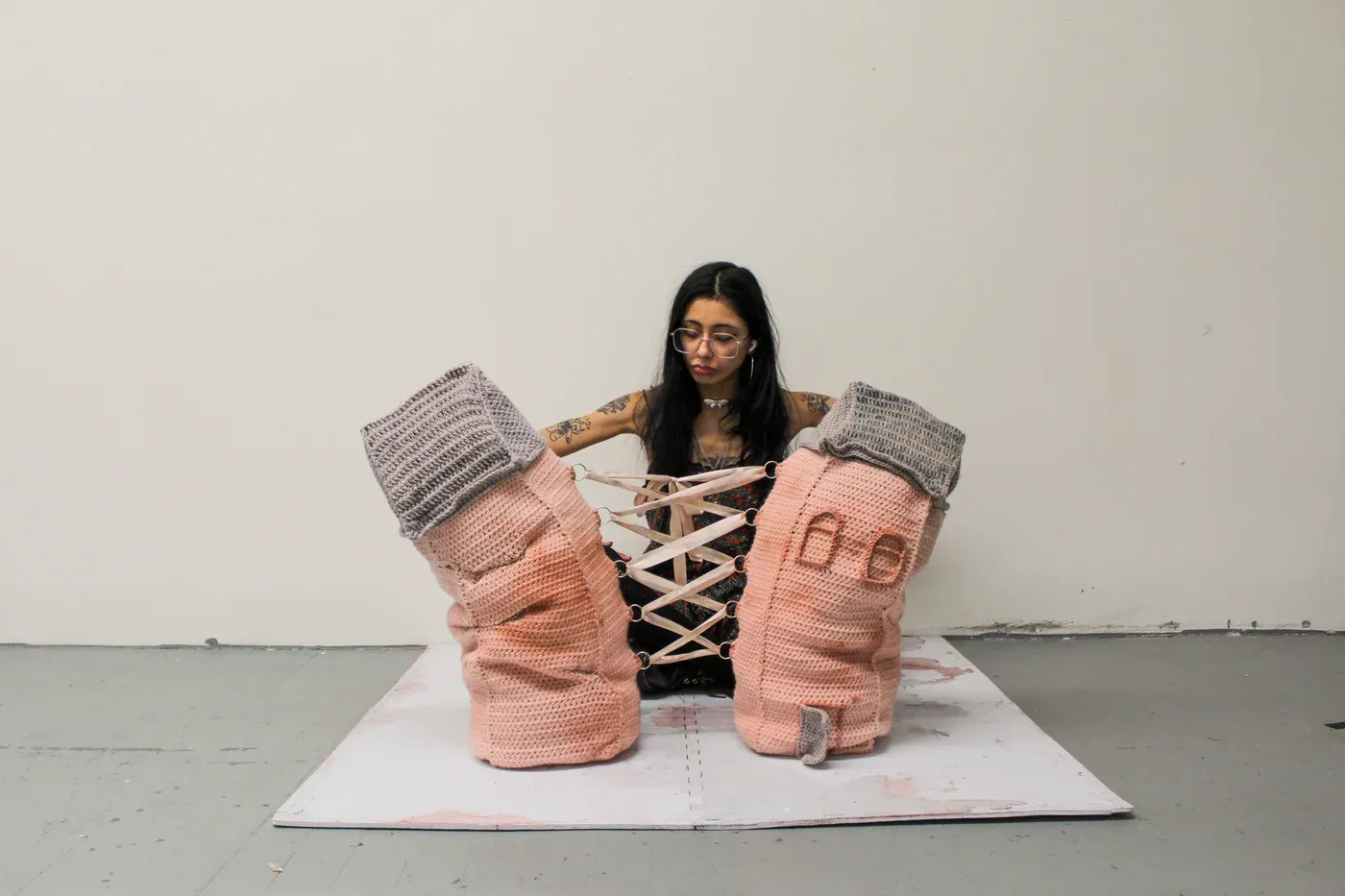
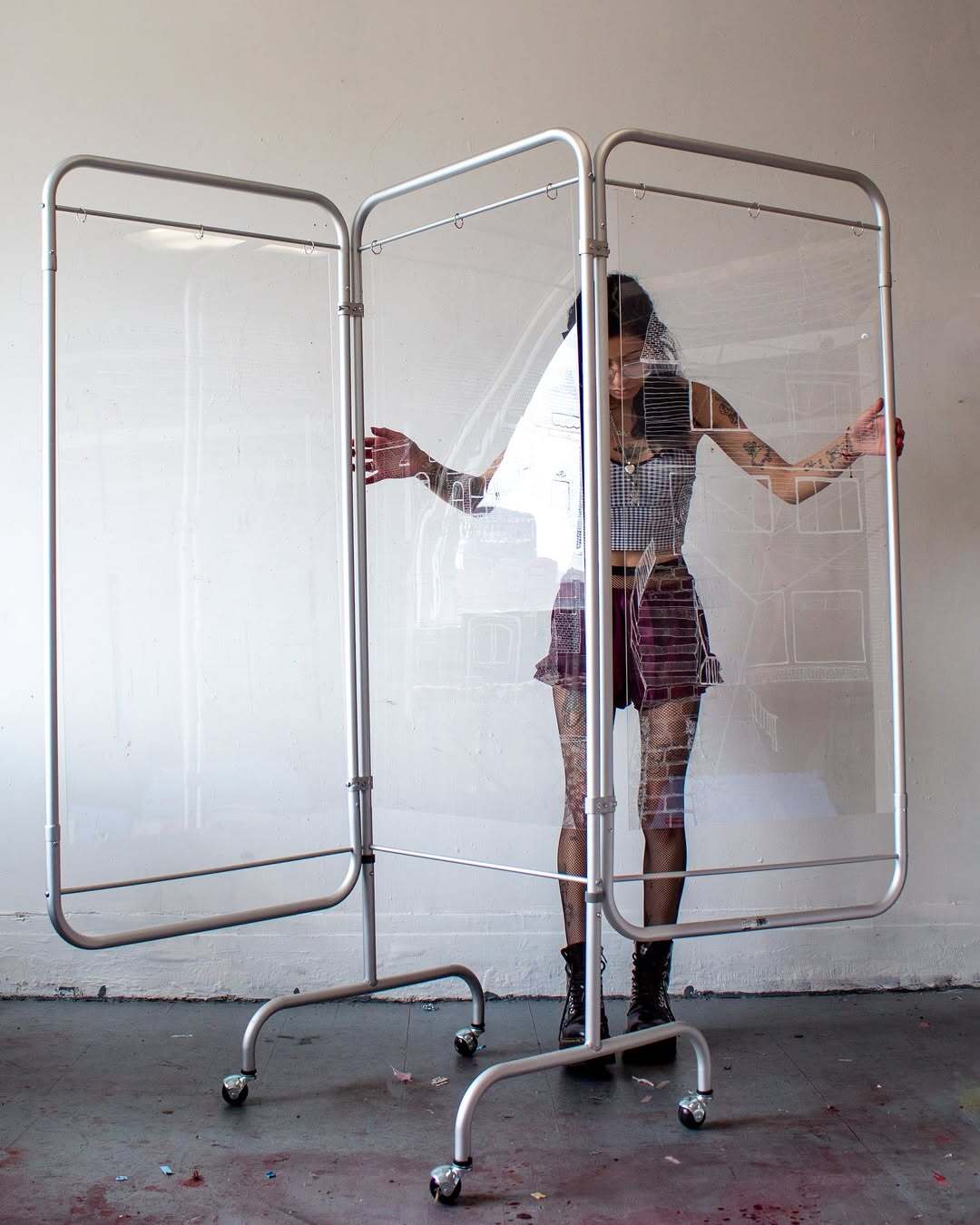
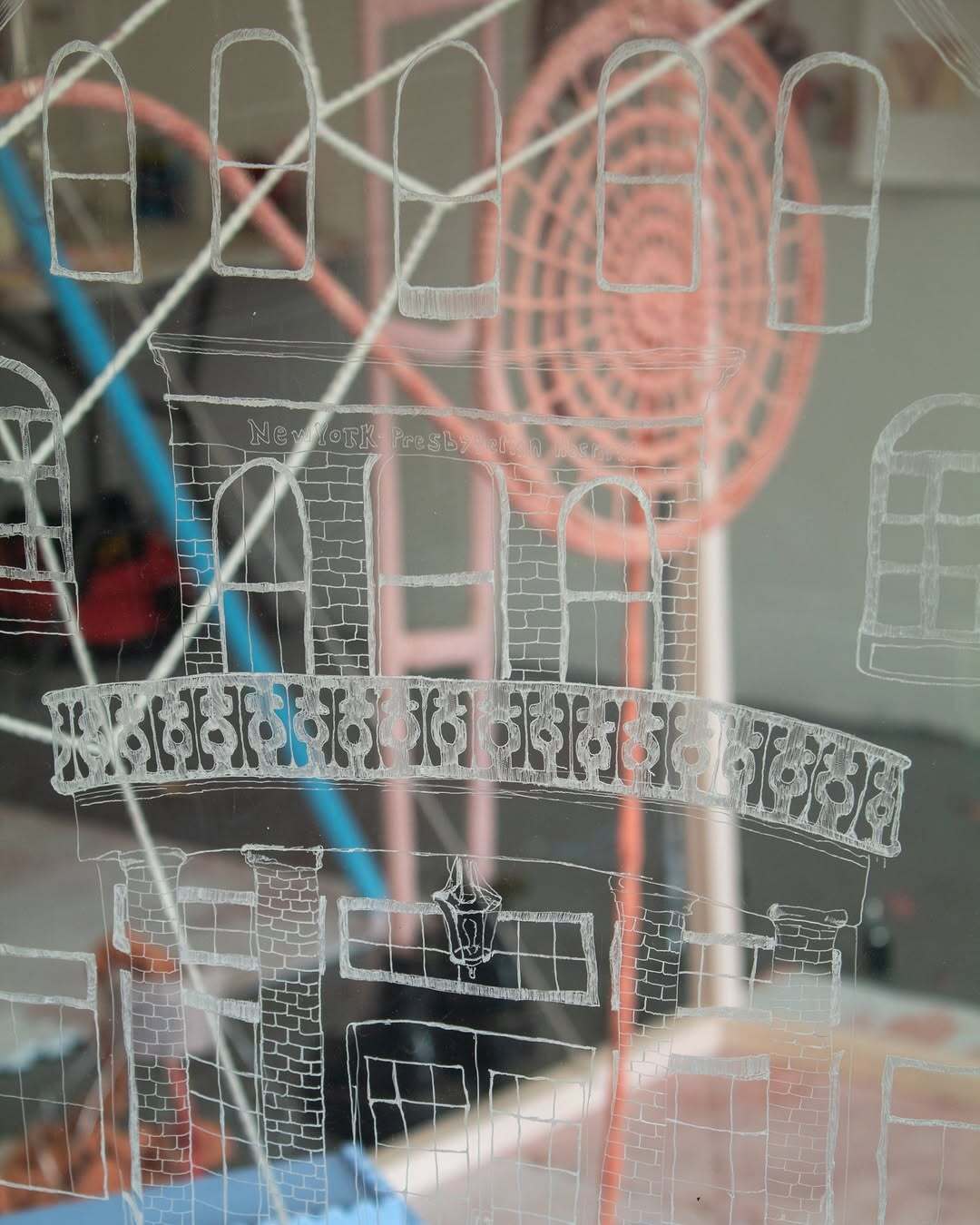
Ophelia Arc transforms medical dividers into fragile architectures, layering memory and body onto transparent skin. Memory house (1–3) | Tattooed plexi on hospital divider Permission and Courtesy of the artis
Suspended skins, sutured cavities, crocheted umbilical cords, and bruised hues hover between the domestic and the surgical.
Arc’s work is a refusal to let the invisible remain invisible.
They pull you into the knot, her term, borrowed from psychiatrist Domina Petric, for the tangled configuration of emotions, beliefs, and trauma that lies at the center of her practice.
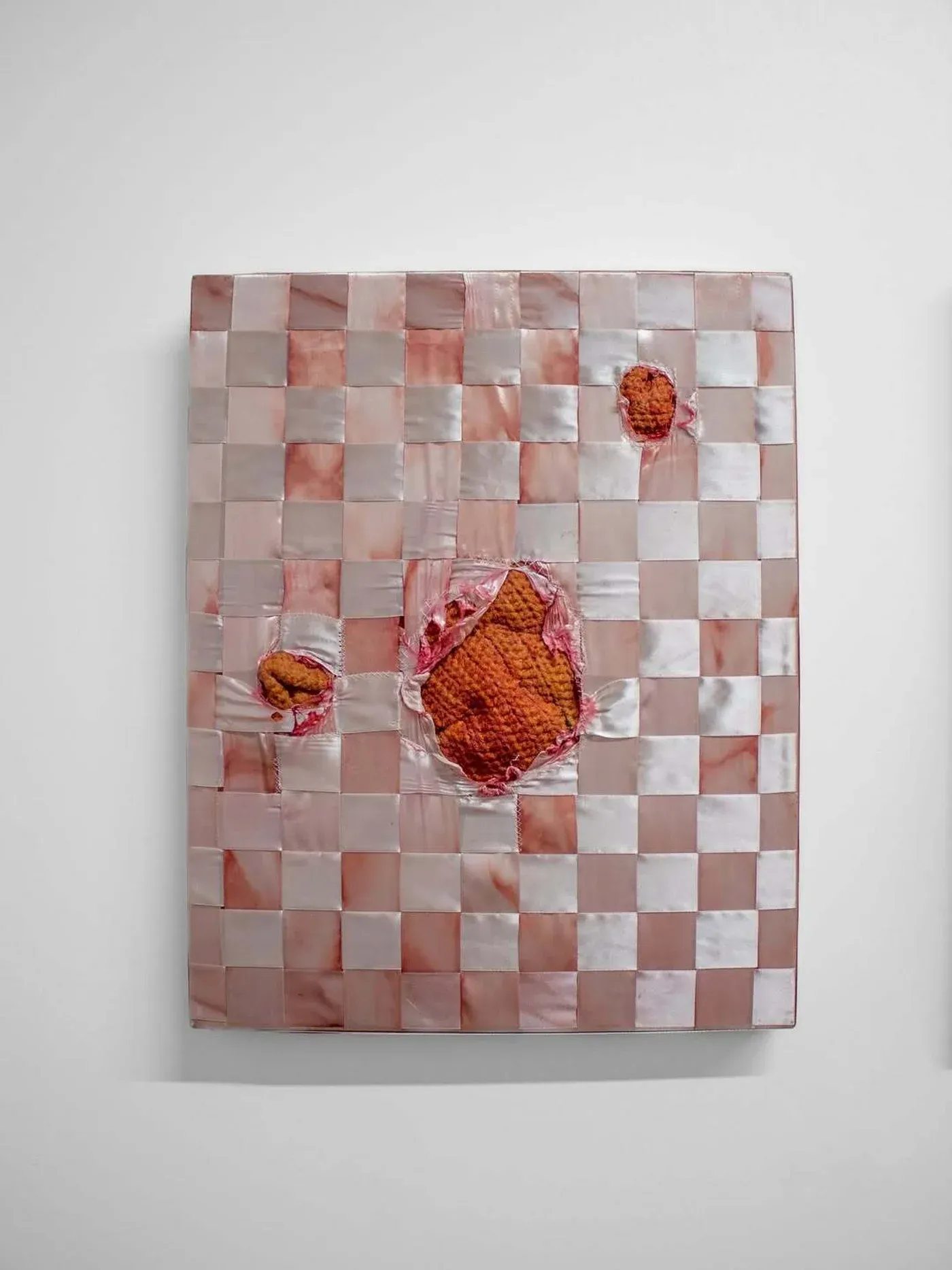
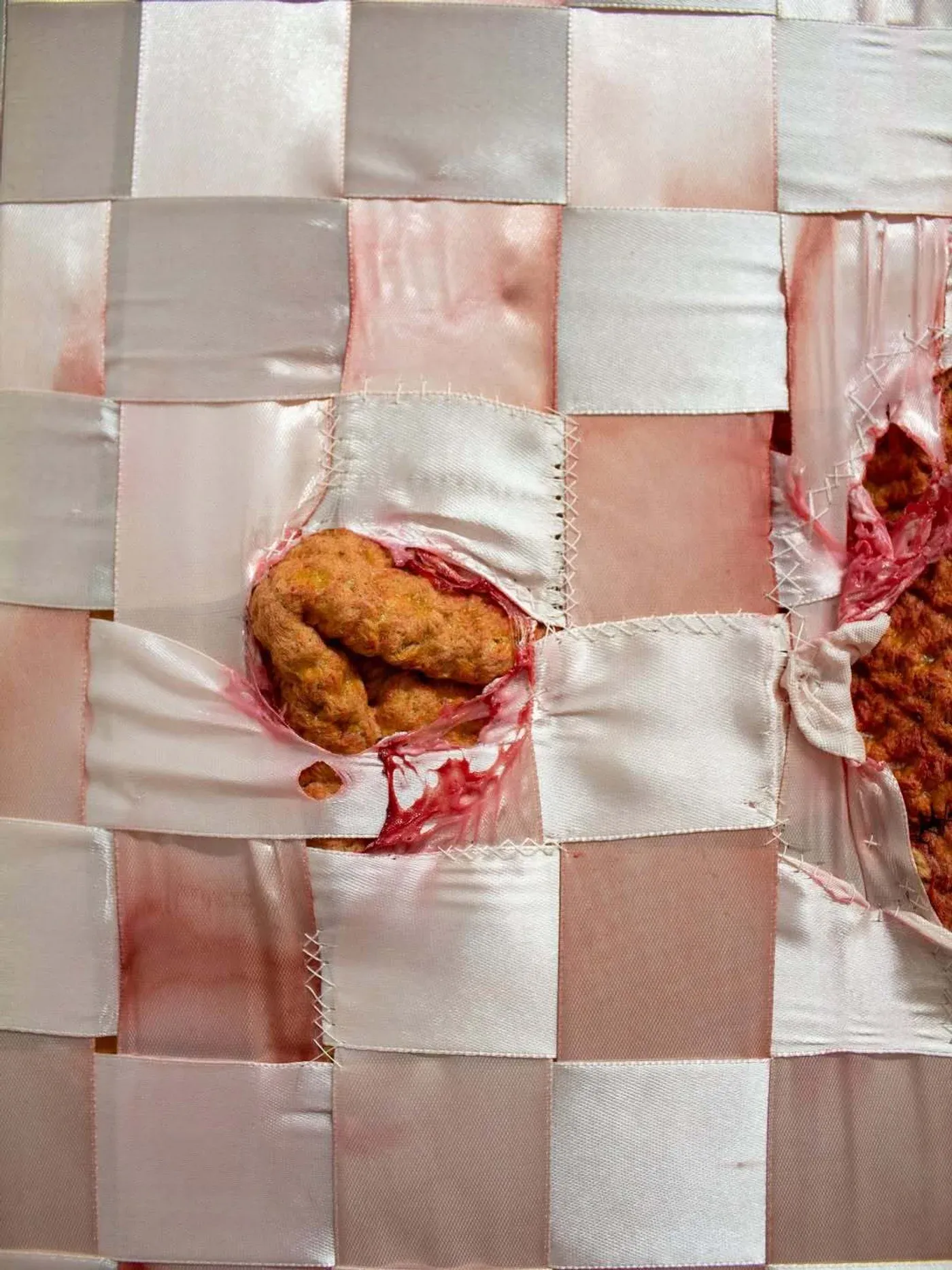
Ophelia Arc ruptures satin into wounds, weaving repair and harm into fragile balance. Harm and repair dependency cycle (intro) | Hand dyed ribbon, hand dyed yarn, latex and thread on double stretcher bars Images courtesy of the artist
Born in 2001 and based in New York, Arc belongs to a generation of artists for whom theory and autobiography are not opposites but fuel.
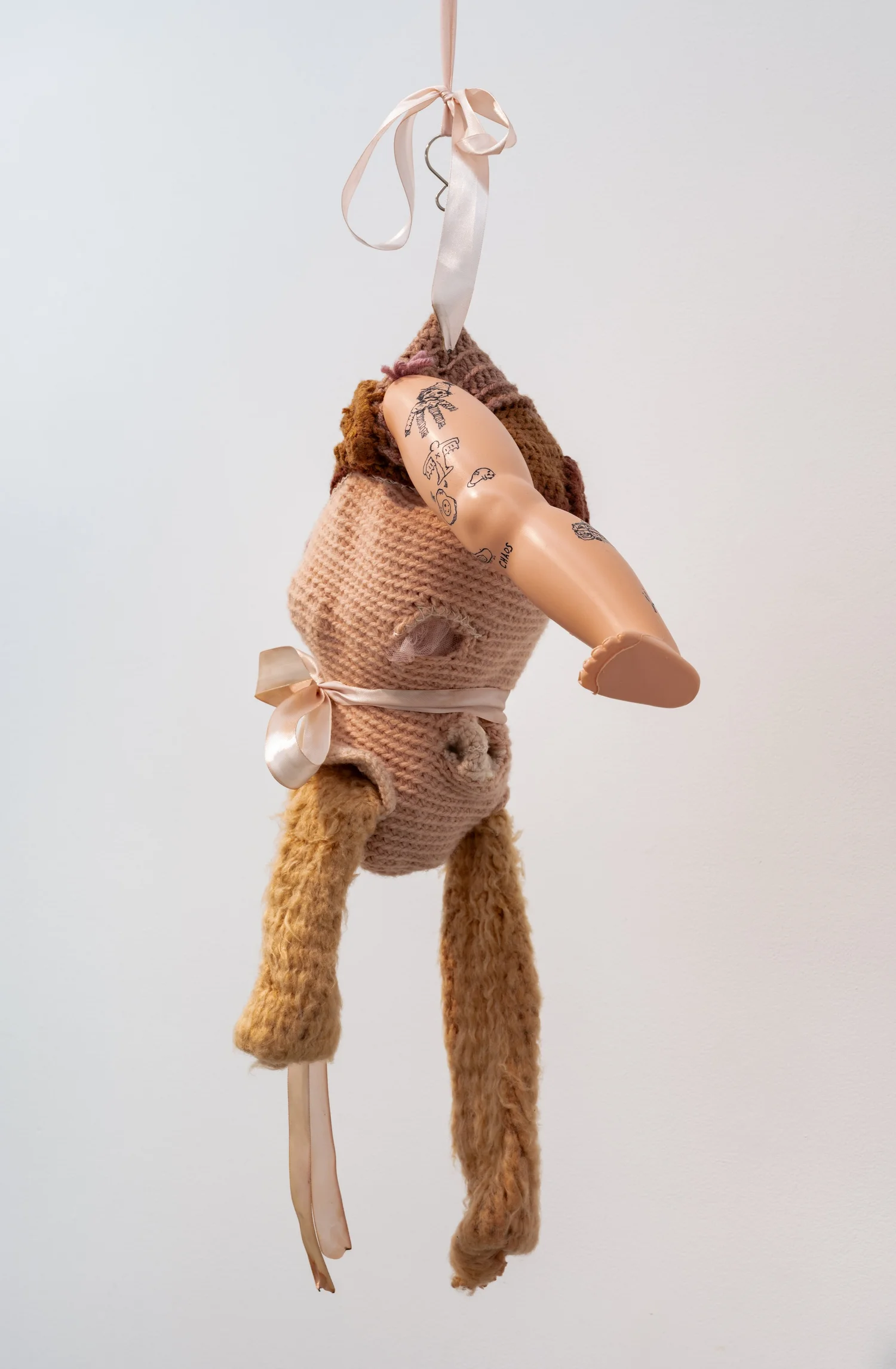
Ophelia Arc at Lyles & King
With Chilean and Peruvian roots, and degrees from Hunter College (BFA) and Rhode Island School of Design (MFA), her practice builds from feminist psychoanalytic and writing (Kristeva, Hustvedt, Winnicott, Chodorow) and her own diaries, photos, and medical documents.
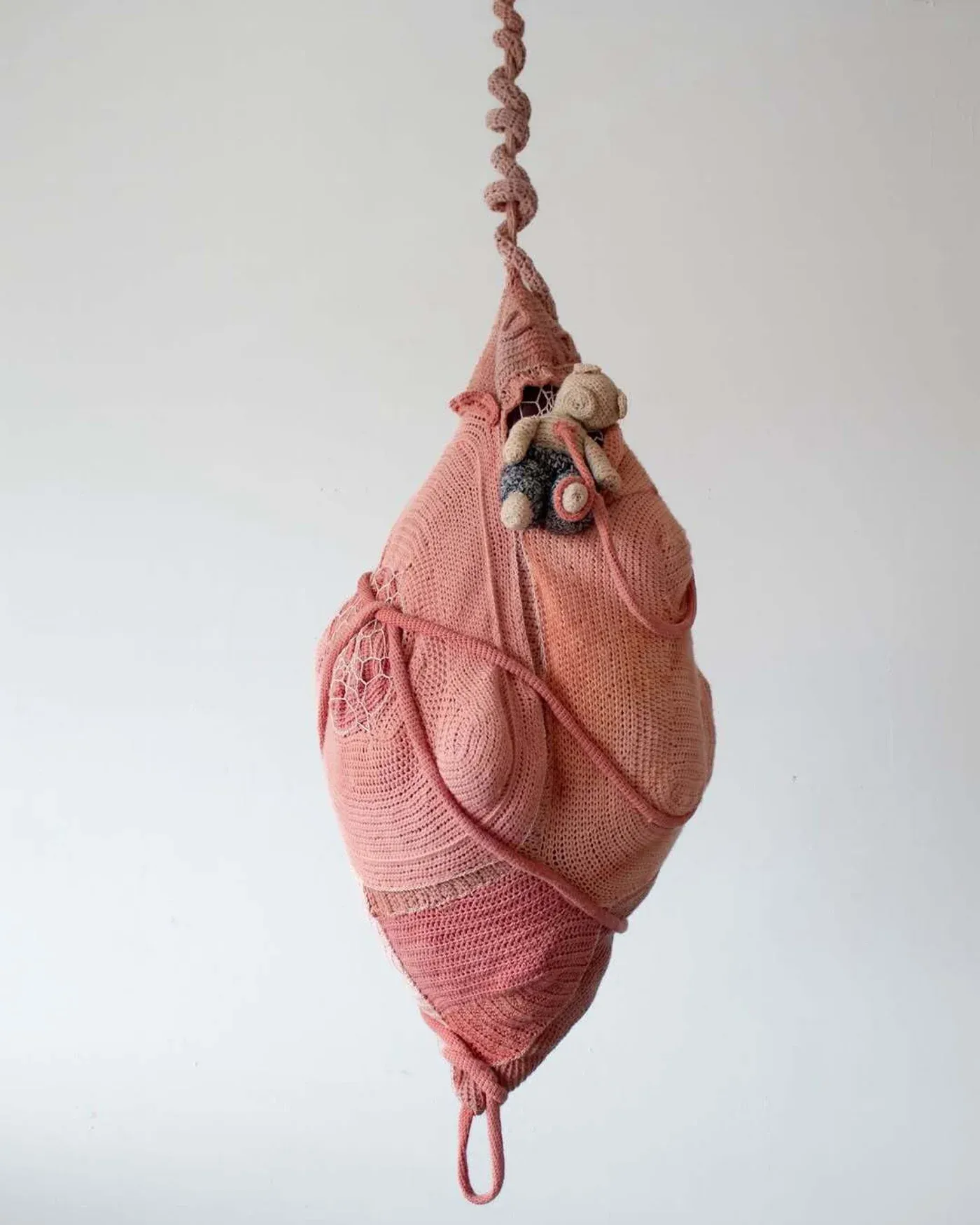
These fragments, knotted together, become sculpture, textile, and installation, skin-like surfaces that record both mutilation and mending.
Key Themes
- Trauma & memory as material
- Feminist psychoanalysis (Kristeva, Winnicott, Sontag)
- Wound dwelling (mutilation vs. mending)
- Skin as metaphor (protection/vulnerability)
- Control, obsession, dissociation
At its heart, Arc’s practice is obsessional. Every element is done by hand: crocheted, stitched, drawn.
Obsession here is not pathology but method, repetition as a way of circling trauma, touch as a way of reasserting presence even in dissociative states.
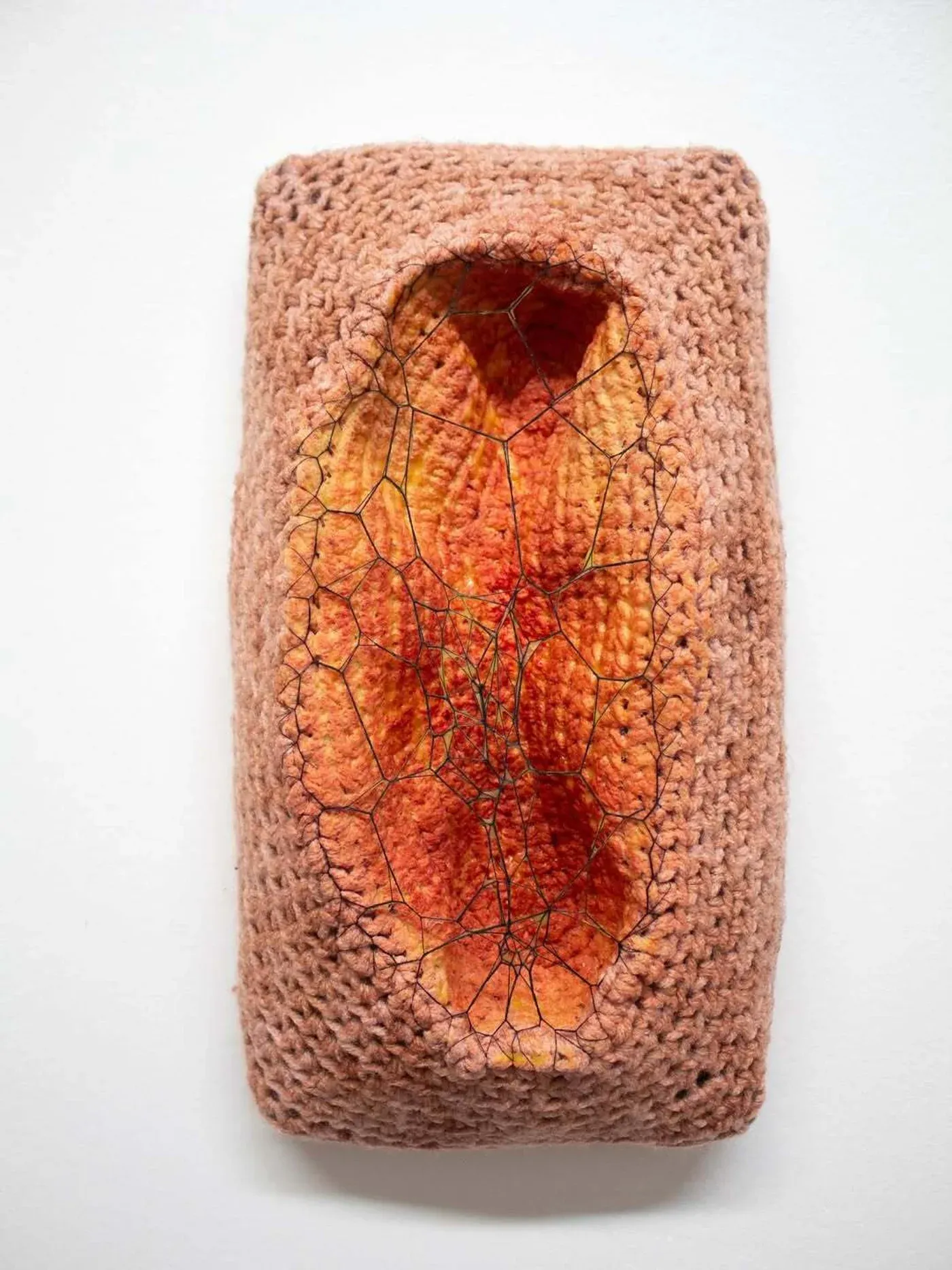
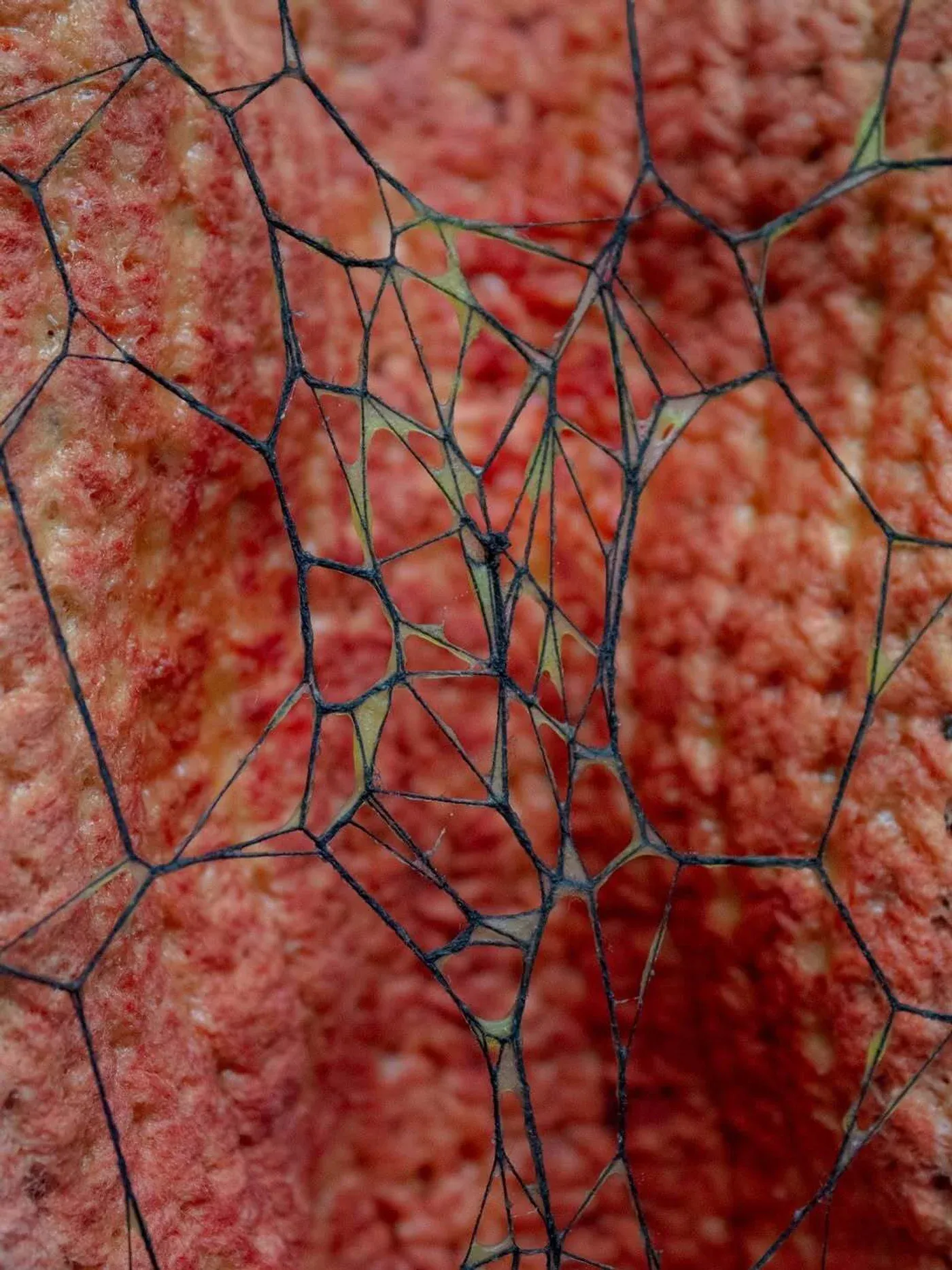
Ophelia Arc turns crochet into raw wounds, where skin splits open and memory bleeds through. mAdana (syte, DreaM) | From thesis exhibition | Materials: hand dyed yarn, thread, tulle and zipper | Dimensions: 30 × 30 × 42 in (variable) Wo(und)mb study | Hand dyed yarn, thread | 6 × 3 × 12 in Permission and Courtesy of the artist
Her palette is equally embodied: flesh pinks, browns, bruised purples, tones dyed from decomposing flowers, acrylic pigments, even her own blood.

Ophelia Arc at Kates Ferri Projects
In doing so, she asserts not only control over material but an uncanny fidelity to the body’s fragility.
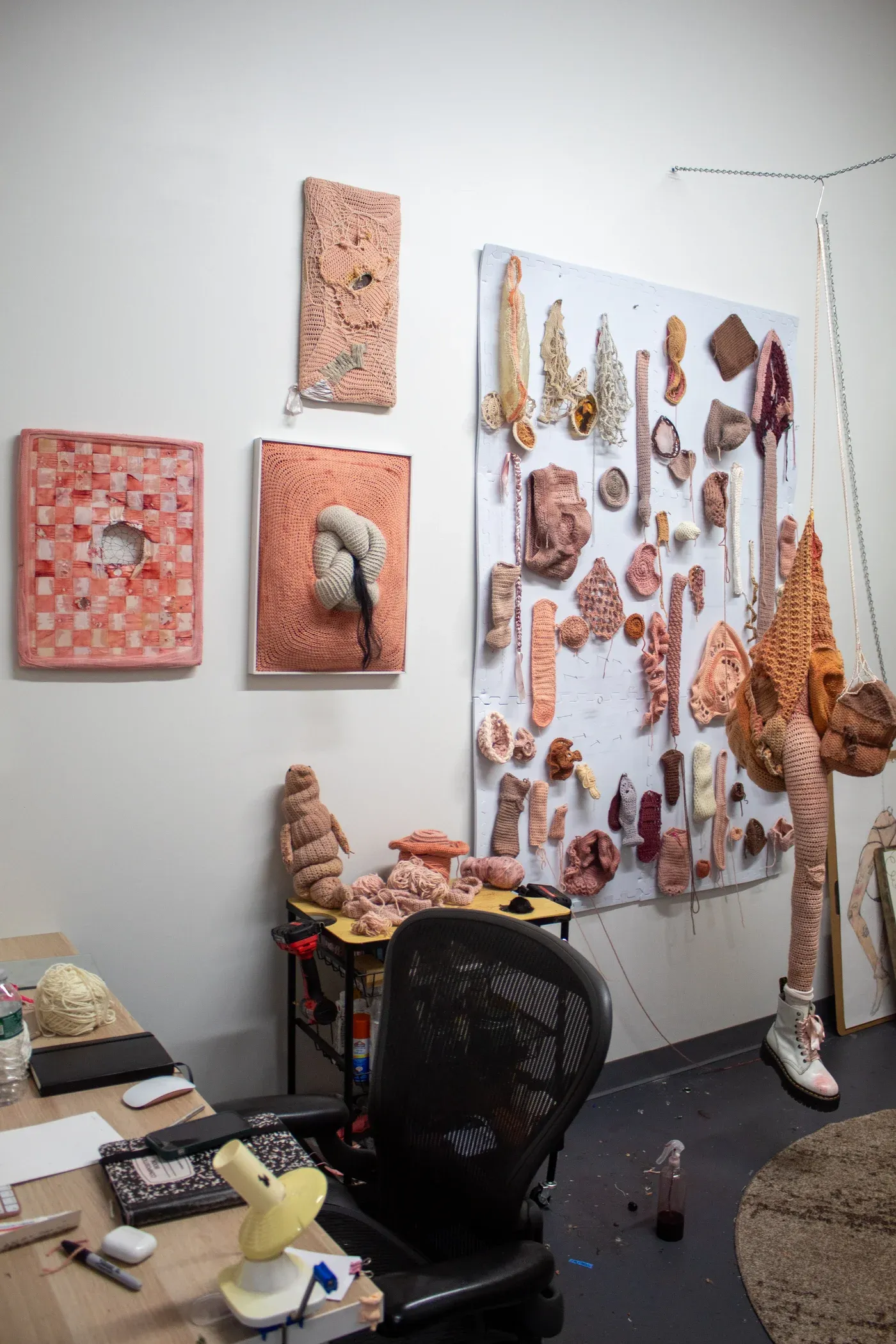
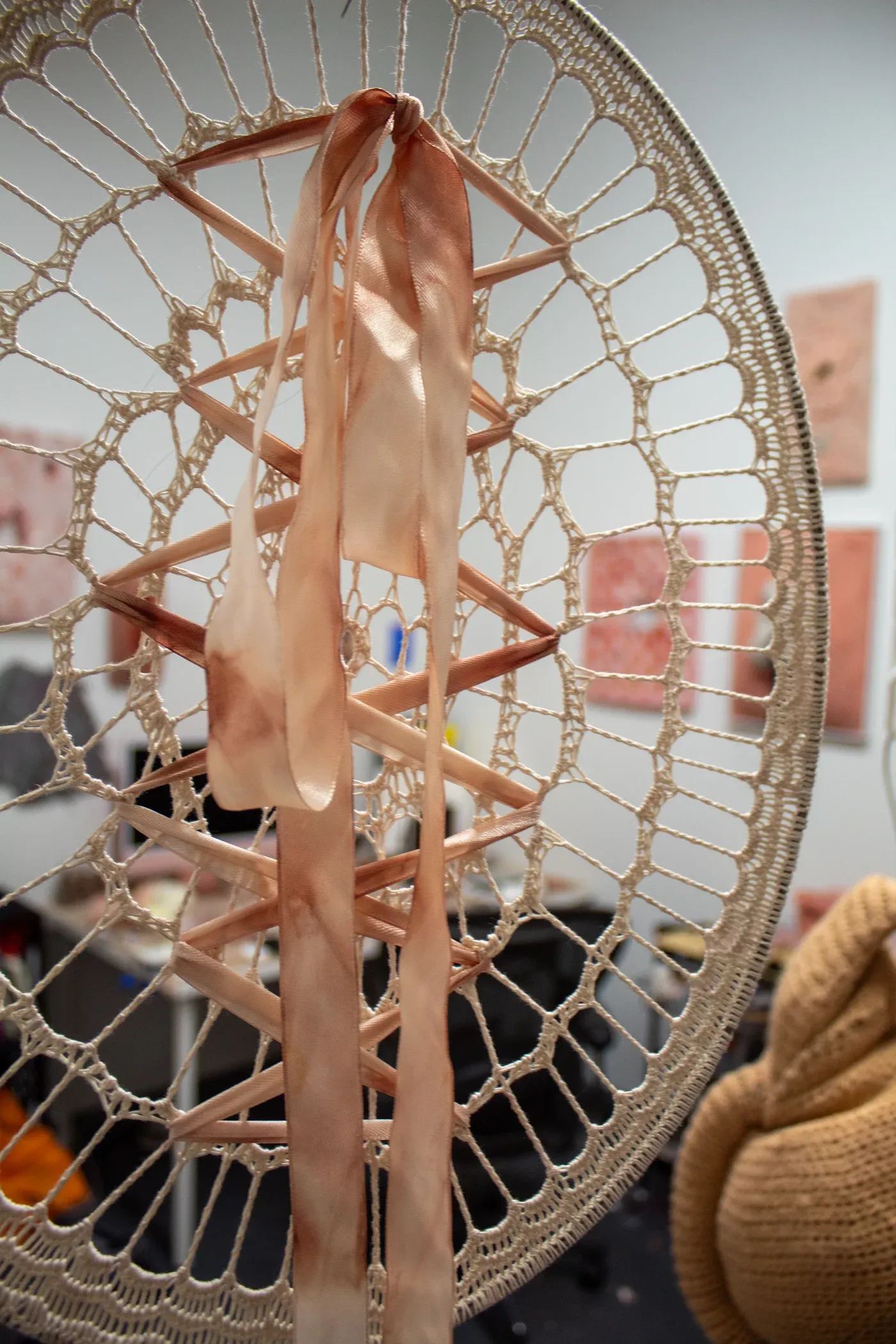
Artist studio: Ophelia Arc surrounded by stitched surfaces and suspended forms, where care and harm intertwine. Wo(und)mb study | Hand dyed yarn, thread | 6 × 3 × 12 in Detail view from Arc’s textile practice | Ribbon, hoop, hand dyed thread | Dimensions variable Permission and Courtesy of the artist
What strikes most in Arc’s work is the tension between comfort and danger. Crochet, long associated with “women’s work,” becomes a site of disquiet when stretched into bulging tumors or limp skins.
Threads reference maternal bonds and caregiving, but also strangulation, starvation, consumption.
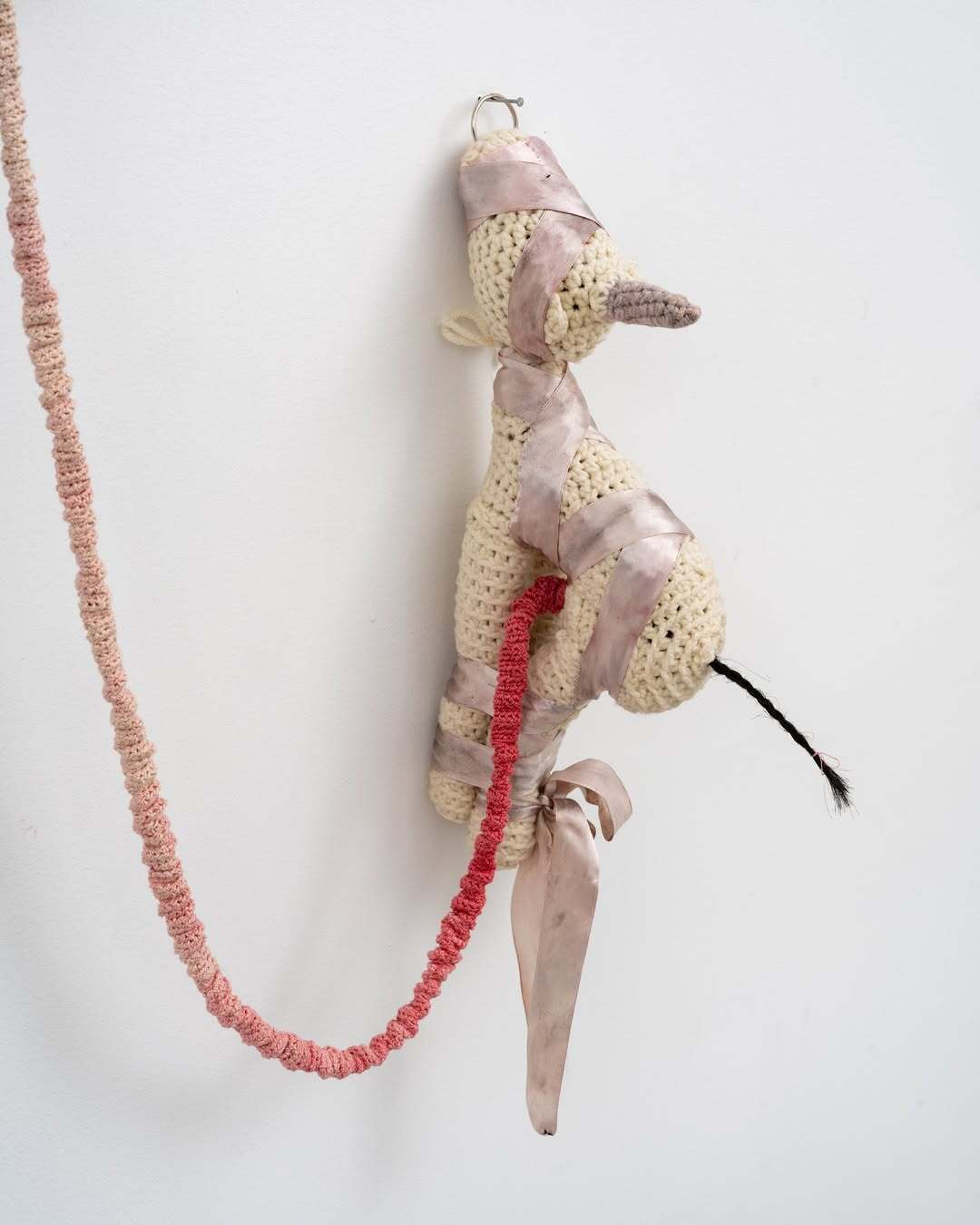
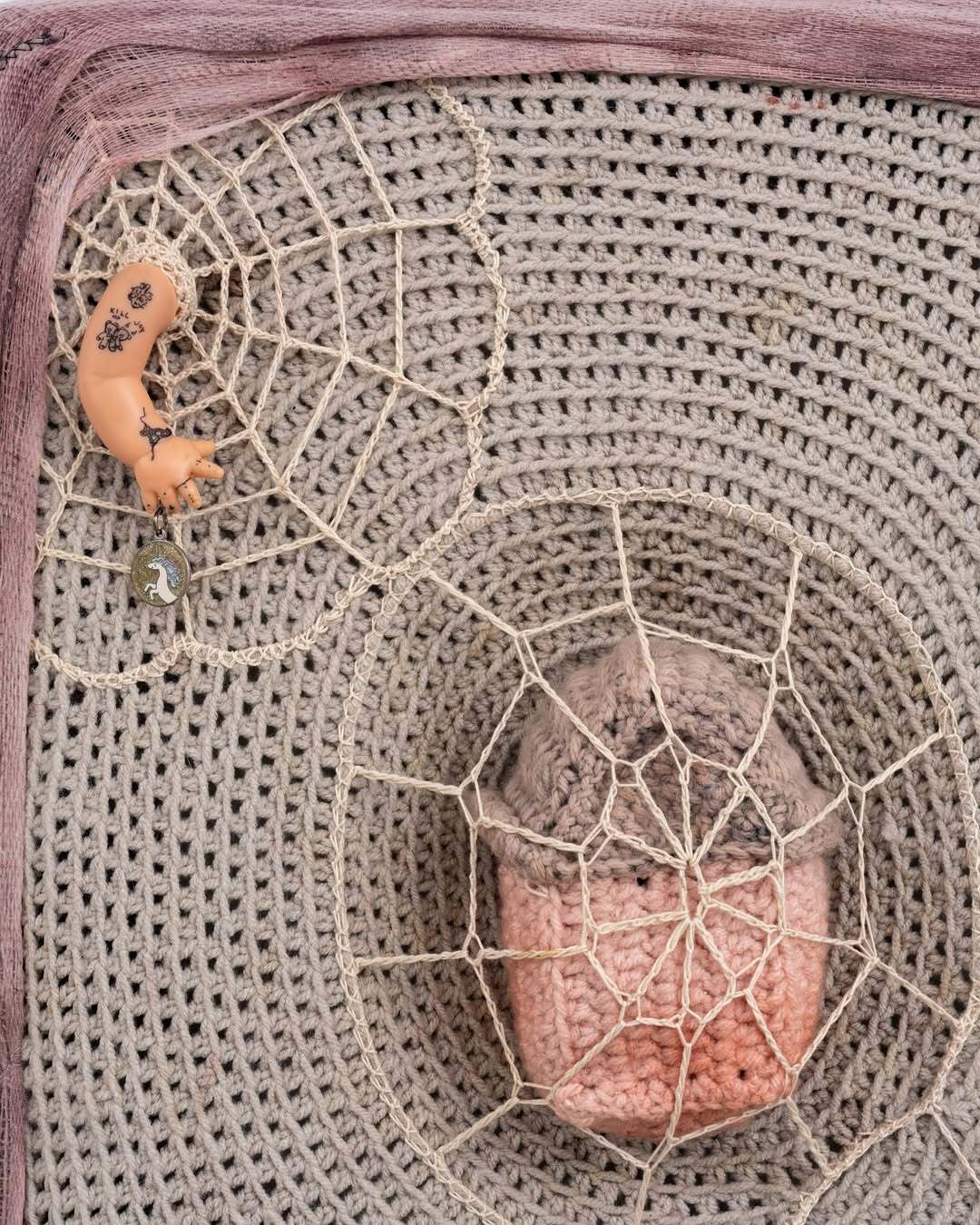
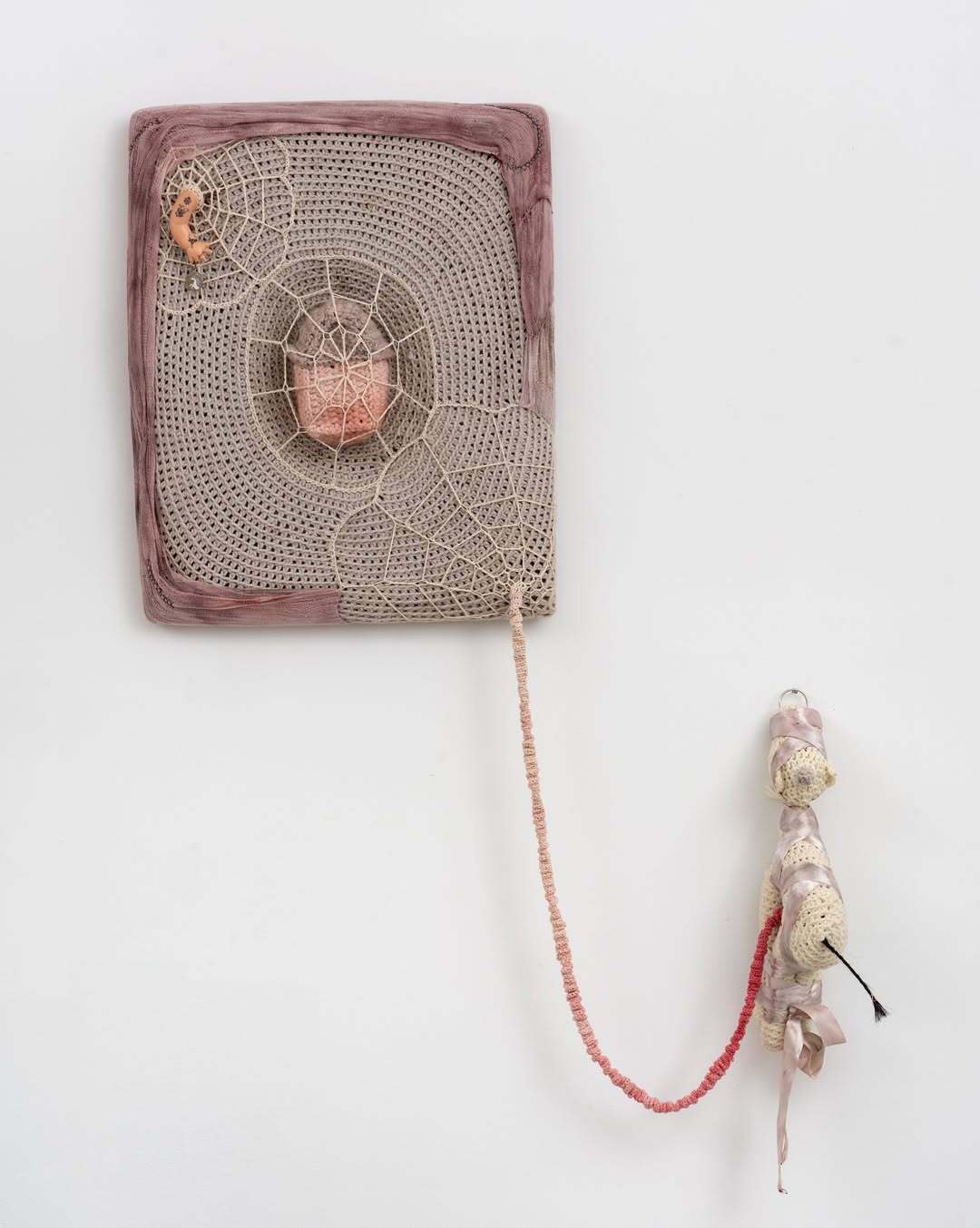

Ophelia Arc layers yarn, gauze, and objects into fragile constructions where memory and body converge. The Natal Lacuna | From her exhibition at Lyles & King Gallery | Hand dyed yarn, dye stained gauze, Alex and Ani sparkle unicorn bangle charm, tattooed doll arm, magnets, thread, and tulle on stretcher | Frame: 20 × 16 ½ × 4 in / 50.8 × 41.9 × 10.2 cm | Overall: 42 × 29 × 6 in / 129 × 73.7 × 15.2 cm Permission and Courtesy of the artist and gallery
Her objects oscillate between care and malice, melancholia and mania, as if they were constantly on the verge of collapsing or reforming.
Notable Series / Visual Motifs
- Crocheted umbilical cords and flesh-toned skins
- Suspended cavity-like forms with medical sutures
- Diary fragments and personal documents stitched into textile
- Bruised, decomposing, blood-infused dyes
The result is a sculptural language that feels simultaneously tender and threatening.
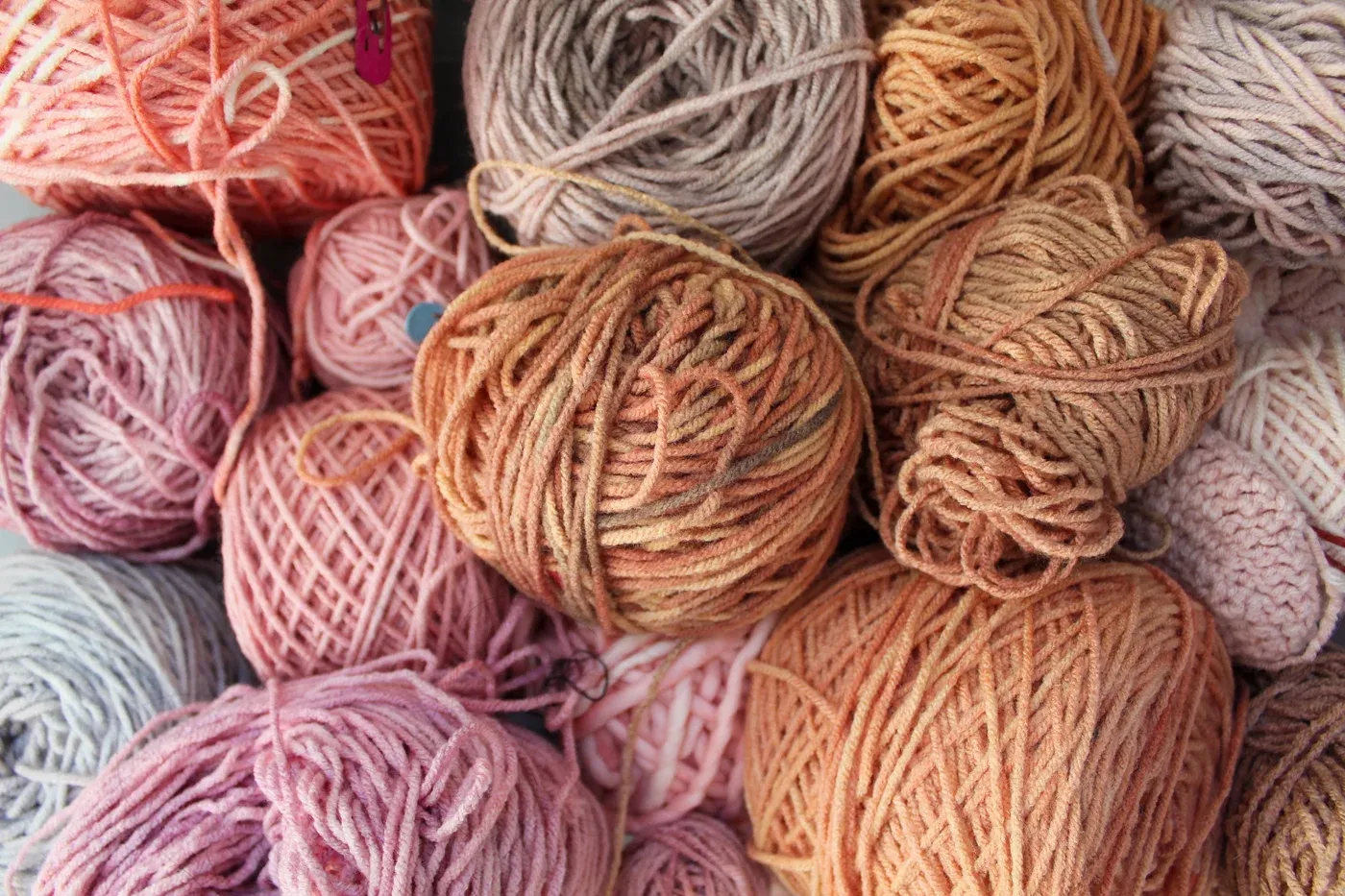
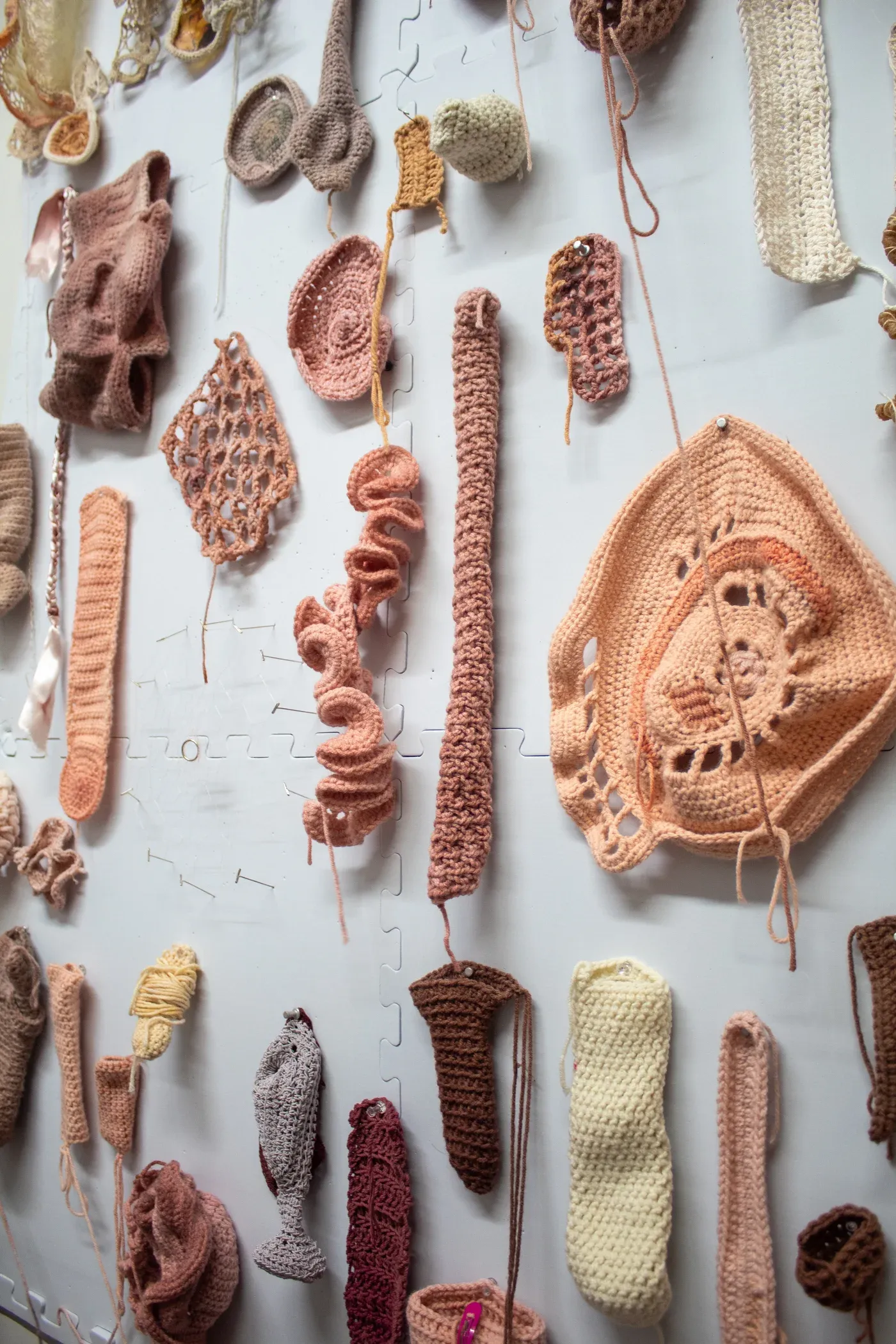
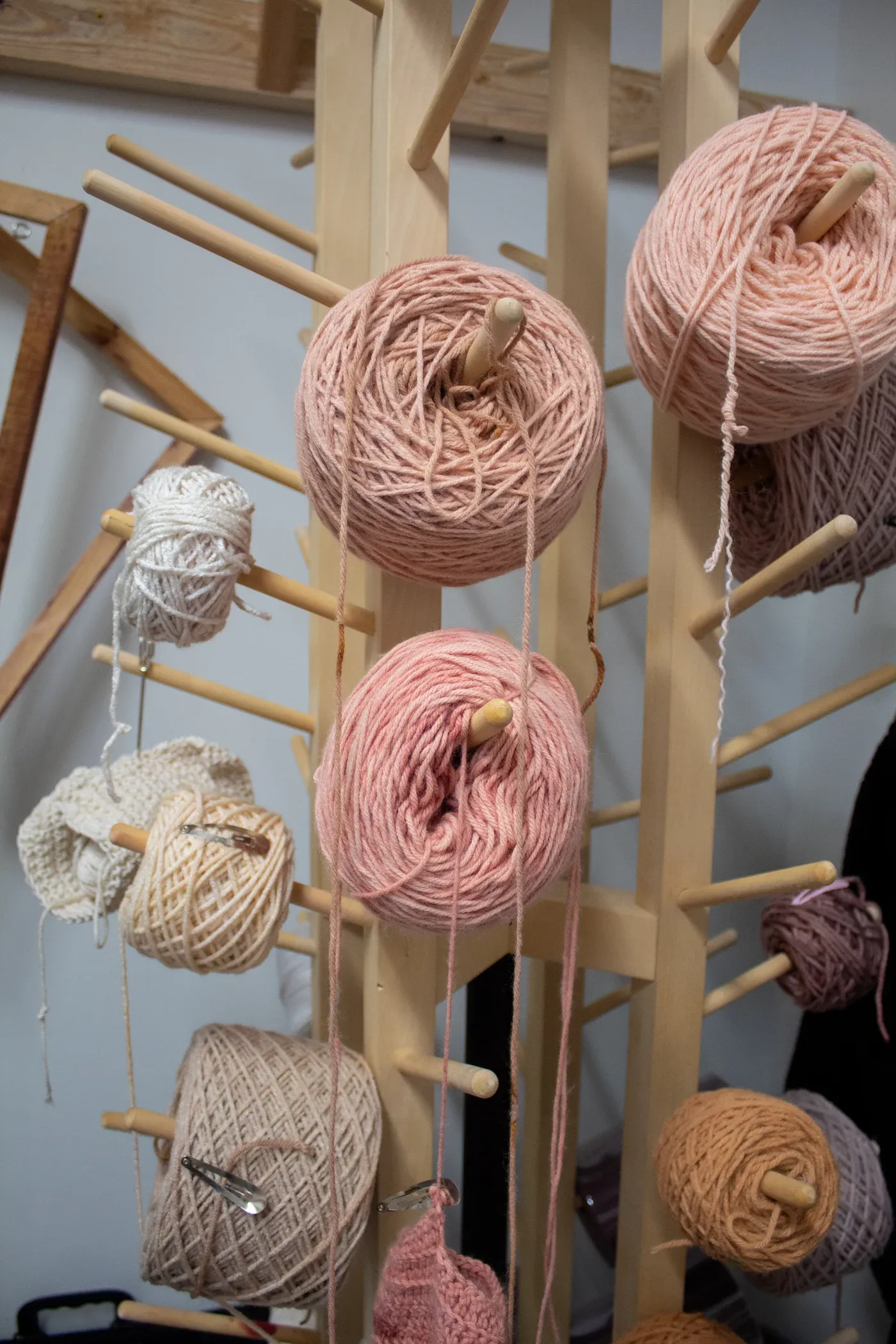
Ophelia Arc builds an archive of flesh-toned fragments, each obsessive stitch mapping trauma as texture. Wo(und)mb study (detail) | Hand-dyed yarn, crochet samples, fragments | Dimensions variable Process view | Spools of yarn on wooden rack, hand-dyed in pink and beige tones Permission and Courtesy of the artist
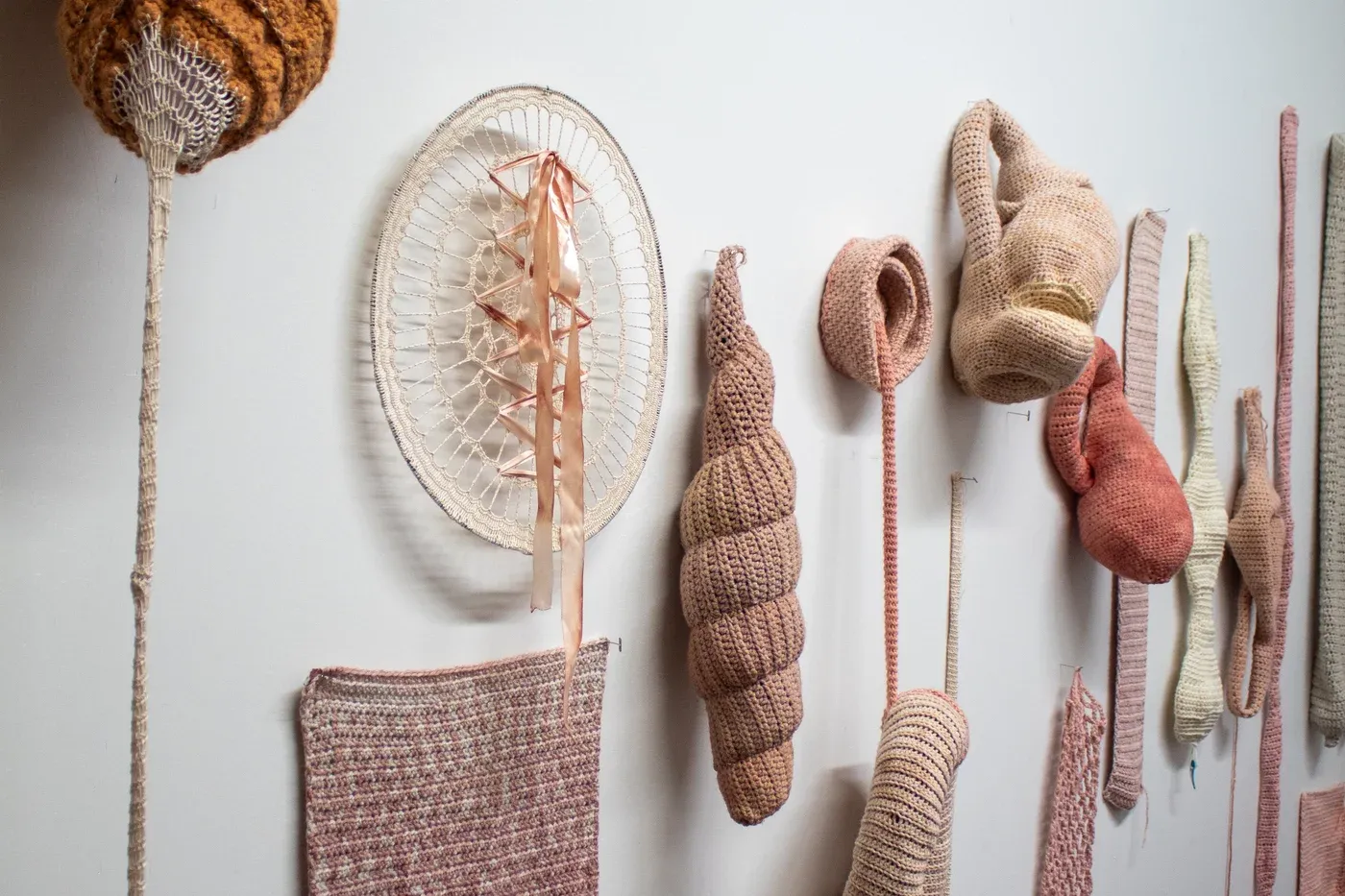
Placed within the contemporary field, Arc converses with predecessors like Eva Hesse or Faith Wilding, artists who also treated fiber as a carrier of corporeal memory, while adding a distinctly psychoanalytic and autobiographical charge.
Where Hesse’s latex bulges pushed against minimalism’s cool logic, Arc’s stitches narrate personal knots of trauma and recovery.
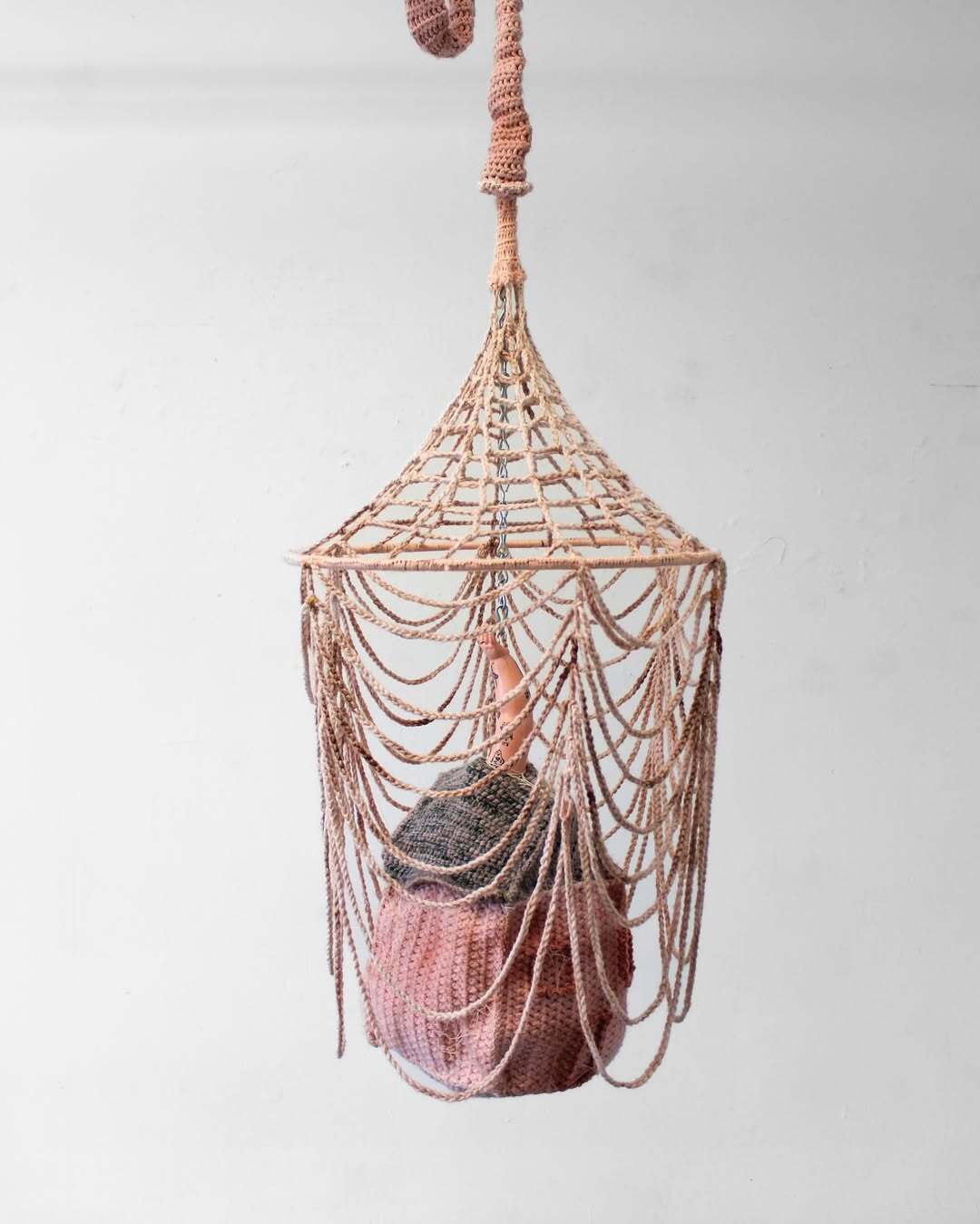
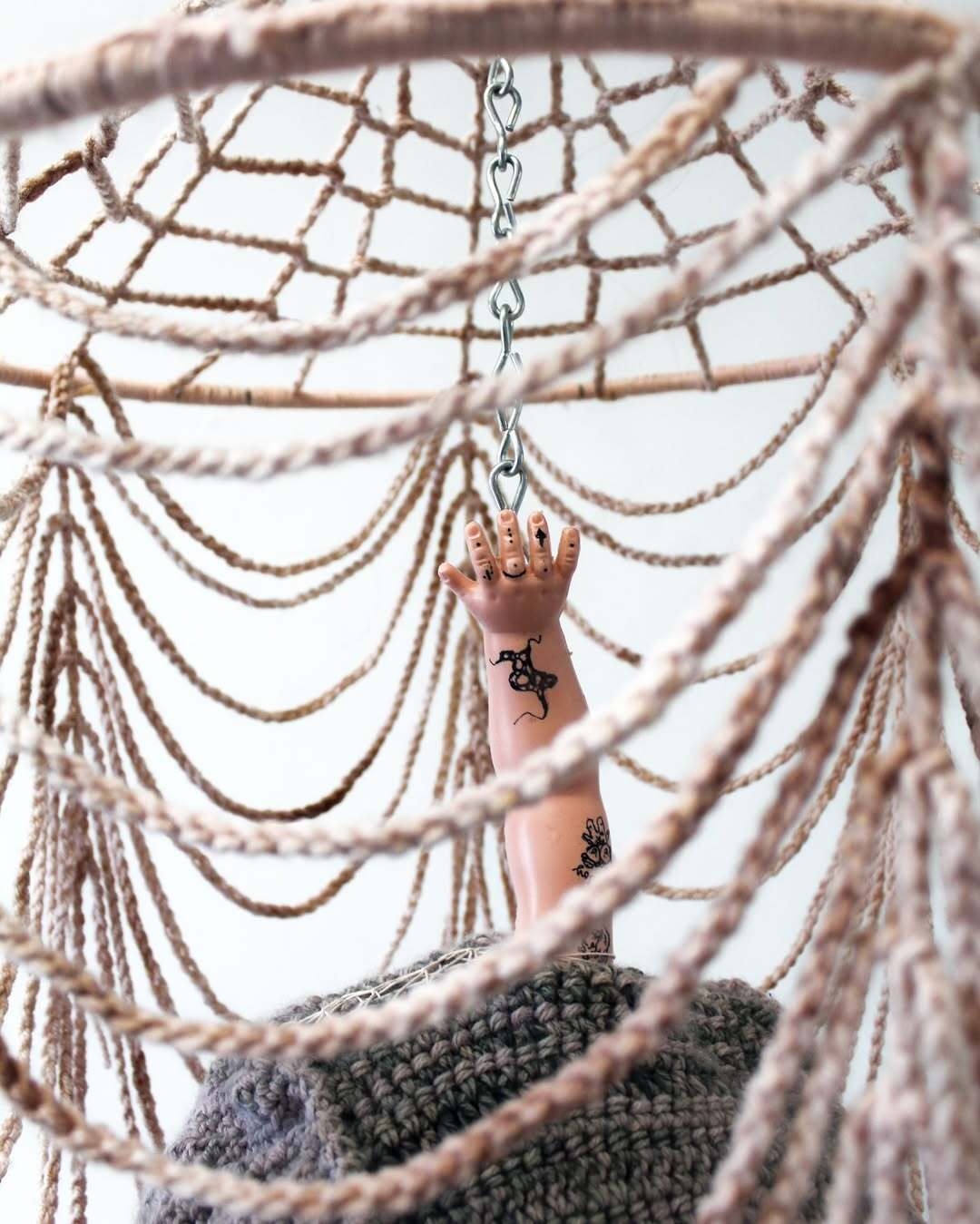
Ophelia Arc suspends bodies in net-like traps, weaving tenderness and entrapment into haunting forms. Totality trap | From exhibition The Natal Lacuna, Lyles & King Gallery | Hand dyed yarn, thread, tulle, tattooed doll arm, chain, welded hoop | 30 × 17 × 17 in / 76.2 × 43.2 × 43.2 cm (height variable) Permission and Courtesy of the artist and gallery
Where Wilding’s feminist craft elevated crochet to a collective ritual, Arc bends it toward the solitary, even obsessive, register of wound dwelling.
Yet Arc’s work resists the neat closure of healing.

Ophelia Arc - Leonard Gallery
These are not memorials to past suffering, but ongoing negotiations. Skins remain open, wounds visibly stitched but never sealed.
The work insists that trauma cannot be wrapped up, only lived with.
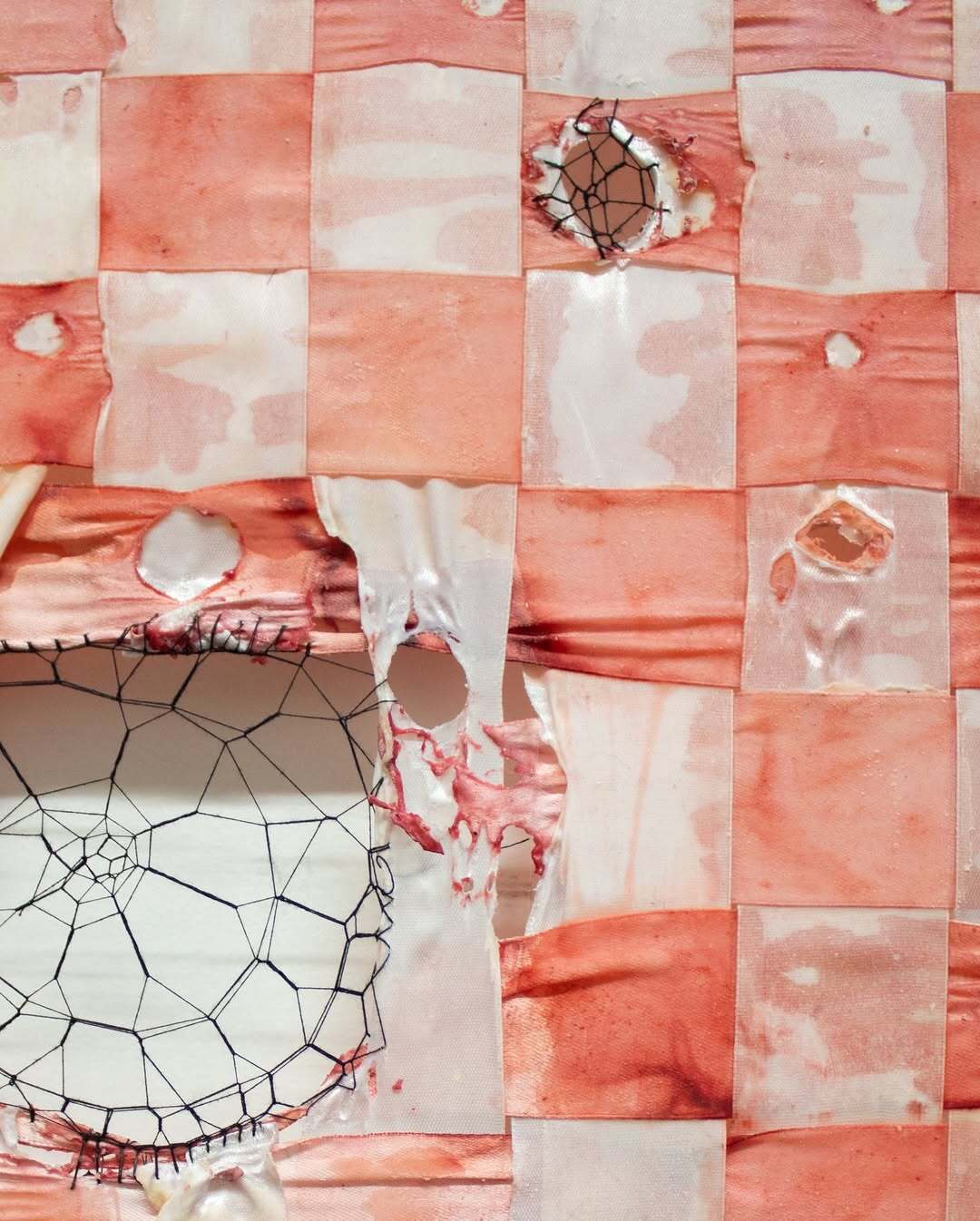
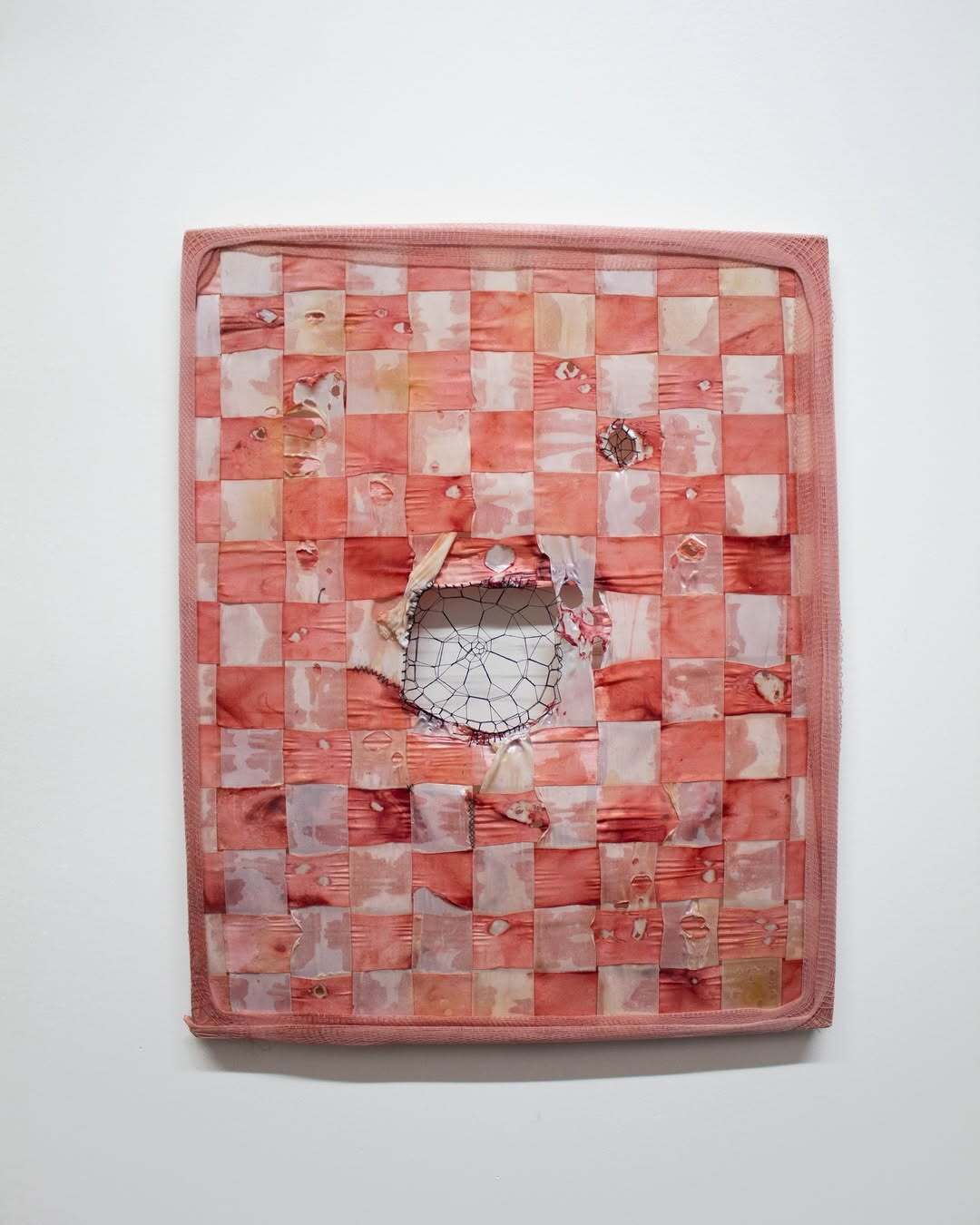
Ophelia Arc opens satin grids into fragile wounds, where surfaces collapse between care and rupture. Harm and repair study I | Latex, hand dyed ribbon, gauze, and thread on stretcher | 16 × 20 in Permission and Courtesy of the artist
Viewers encountering her suspended, cavity-like sculptures are invited not into catharsis but into recognition, a shared unease, a mirroring of their own hidden scars.
In this way, Arc takes the fragile materials of thread and memory and makes them monumental. Her work is a refusal to let the invisible remain invisible.
Each crocheted form is a marker of survival, each suture a record of agency reclaimed.

To see her work is to confront paradox: grotesque yet delicate, abject yet intimate, personal yet universal.
The rawness of Ophelia Arc’s practice is not a pose but a presence. She makes trauma tactile, and in doing so, redefines textile.
Cover Photo by Siwon Park
Stay close to Ophelia Arc’s journey, discover new works on her Instagram and explore deeper insights and exhibitions through her website.

Ophelia Arc - Online






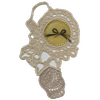
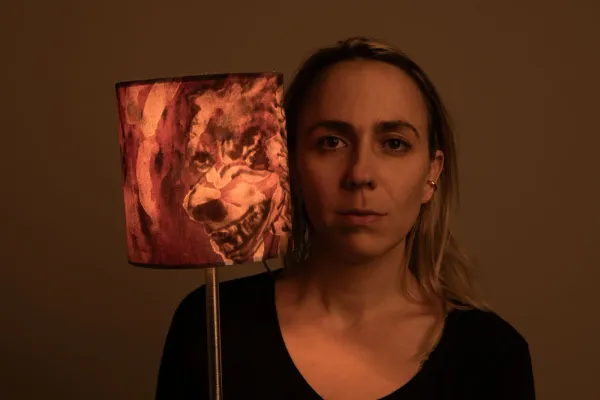
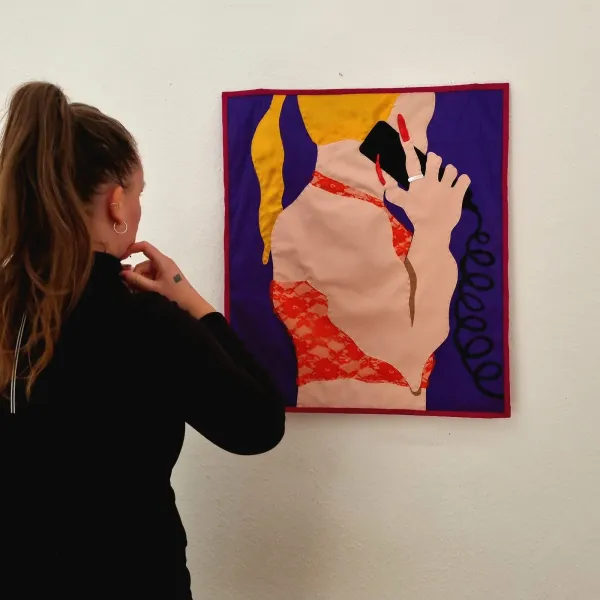
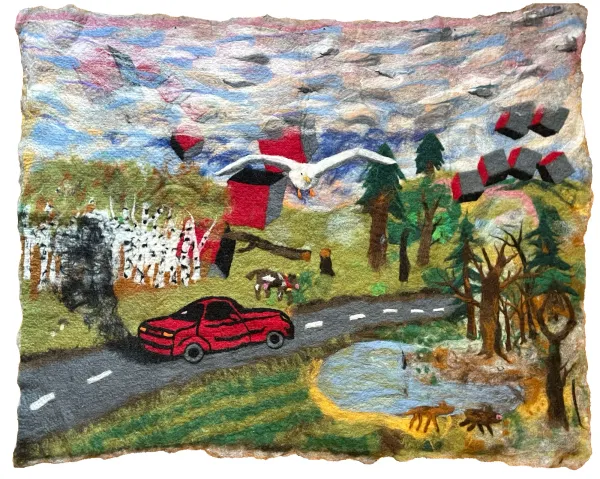
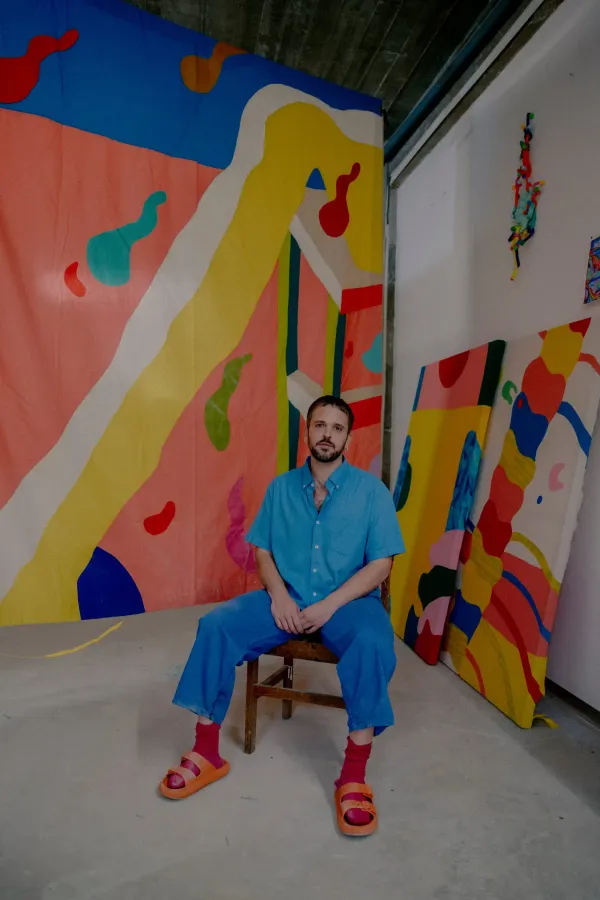

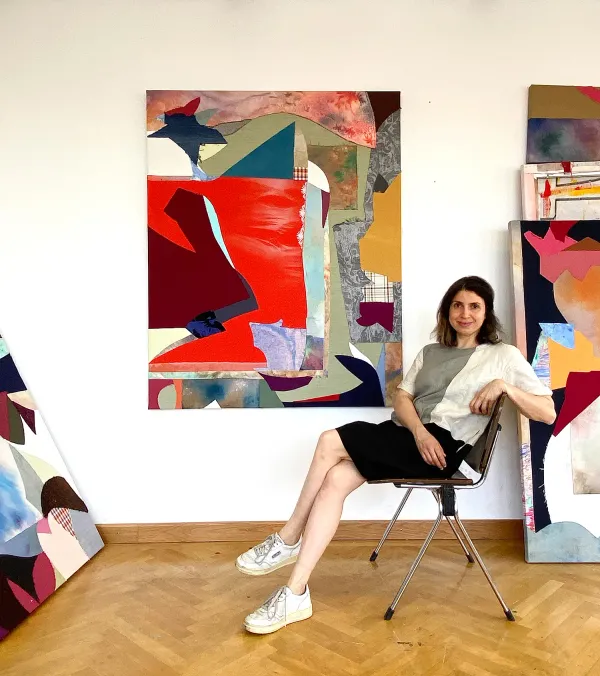
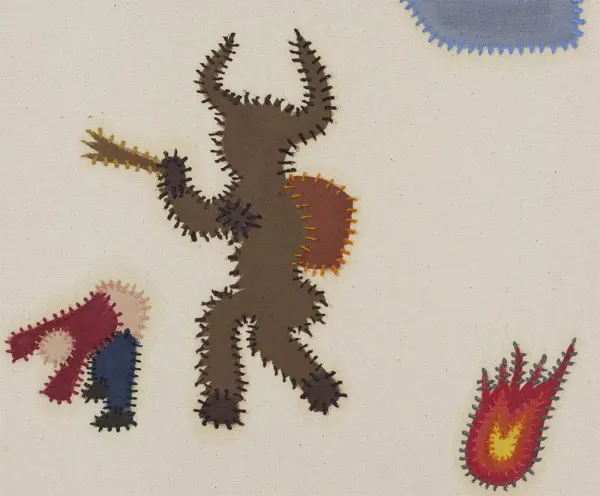
Member discussion